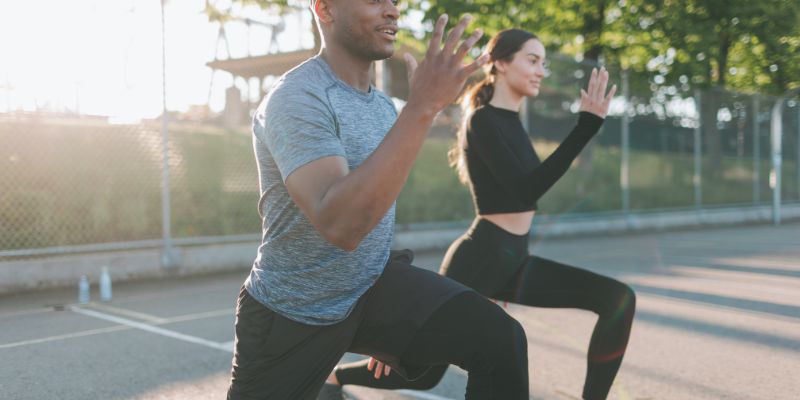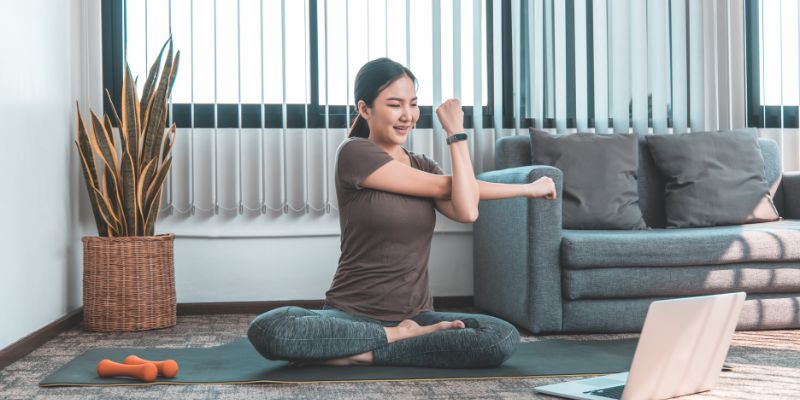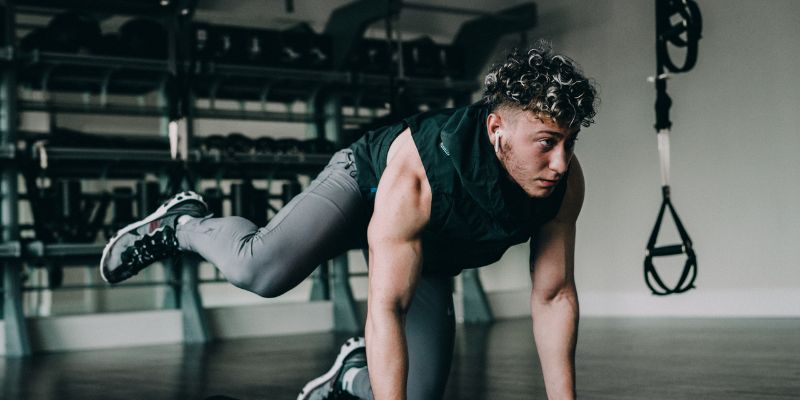Have you ever thought about how to make lunges work for you? Experience the world of lunges to learn efficient techniques, benefits, and exciting variations. Learn appropriate techniques to target key muscle groups, get strength-building advantages, and try active variations to take your fitness to the next level. Whether you're an expert at exercise or a beginner, this guide will help you make lunges an essential of your workout plan, increasing strength, balance, and overall health.
Section 1: Simple Lunge Technique
The basic lunge is like a foundational move, focusing on essential leg muscles like the front thighs, back thighs, buttocks, and lower leg muscles. Getting the hang of this crucial technique is vital for a well-rounded exercise routine. Let's break down each step to make sure you do it right:
Starting Position:
It would help if you started by standing with your feet apart; it will equal the width of your shoulder. A strong base is necessary for this. Keep a good position, relax your shoulders, and tighten your stomach muscles. This starting position is like setting the scene for a controlled and balanced lunge.
Stepping Forward:
Take a clear step forward with one foot. Make sure your knee is right above your ankle to keep things aligned. This forward move works your front thigh muscles and starts the action of the lunge. This forward lunge technique is essential for muscle movement.
Lowering Your Body:
As you step forward, start lowering your hips toward the floor. Both knees should make a 90-degree angle, working your front thighs, back thighs, and buttocks. Keep your back straight and lift your chest as you go down. This way, your muscles activate well, and you lower the risk of strain.
Return To Starting Position:
To finish the lunge, push off the front foot. This engages the muscles in your lower body, especially the buttocks and front thighs, as you return to where you started. It's essential to stay in control during this part to get the most out of the exercise. After you finish the lunge on one leg, do the whole thing again with the other leg.

Section 2: Lunges Exercise Benefits
Strengthens Your Leg Muscle:
Lunges are like a superhero for your leg muscles – they work on significant parts like the front of your thighs, the back of your thighs, and your backside. Doing these regularly can make these areas stronger, whether you want fit legs or better performance in sports. Lunge muscle exercise is important for your fitness.
Helps You Stay Balanced And Steady:
When you do lunges, you need to be in control and stay steady. This not only makes you better at balancing but also helps with coordination. After a while, you'll notice you're better at staying balanced, making everyday activities easier.
Strengthens Your Tummy Muscles Too:
Even though lunges focus on the lower part of your body, they also wake up the muscles in your middle. Your tummy muscles play a big part in keeping you steady while doing lunges. So, not only does it make lunges more effective, but it also adds to your overall tummy strength.
Moves That Help You In Daily Life:
Lunges are like daily practice for things you do, like walking, going upstairs, or handling uneven surfaces. Because lunges copy these everyday moves, they're like a secret weapon for making these activities feel more manageable and smoother.
Good For Your Joints:
The gentle and smooth moves of lunges are kind to your joints. Moving in a full range helps make your hip, knee, and ankle joints more flexible. This is especially helpful for people who want to keep their joints healthy or those recovering from an injury.
Focuses Your Mind And Body:
Lunges need you to pay attention and connect your mind to your body. Concentrating on doing them right improves your mind's sharpness during exercise. This mindfulness spills over into better focus and mental strength in your everyday life.
Adding lunges to your routine is an easy way to care for your body. Whether you want stronger muscles, better balance, or a healthier you, lunges have you covered. Remember to start at a comfortable level and gradually challenge yourself more. And most importantly, keep it up regularly to enjoy all the benefits lunges bring your way.

Section 3: Different Ways To Do Lunges
Try out fun ways to do lunges that work different muscles:
Step Back Lunge:
Instead of stepping forward, take a step back and lower your body. This focuses on your leg and hips.
Walking Lunge:
Move forward while doing lunges, switching legs with each step. It's like walking and adds a bit of excitement to your workout.
Side Lunge:
Step to the side and lower your body, working your inner and outer thighs. This move is like a sideways step and targets different muscles.
Twisted Lunge:
Cross one leg behind the other at a diagonal angle, like doing a curtsy. This engages your glutes and outer thighs.
Jumping Lunge:
Add a jump between lunges for some extra fun. This boosts your heart rate and helps with your overall fitness.
Give these lunge variations a try to make your exercise routine more enjoyable. Each one has its benefits and makes your lower body workout more complete. Remember to keep good form and start with the ones that feel right for your fitness level.
Conclusion
In conclusion, learning the basic lunge technique sets the stage for a well-rounded exercise routine, focusing on essential leg muscles. The many benefits, from strengthening to improving balance, make lunges a flexible and easy addition to any fitness plan. Try out different lunge styles for an enjoyable and effective lower-body workout.




